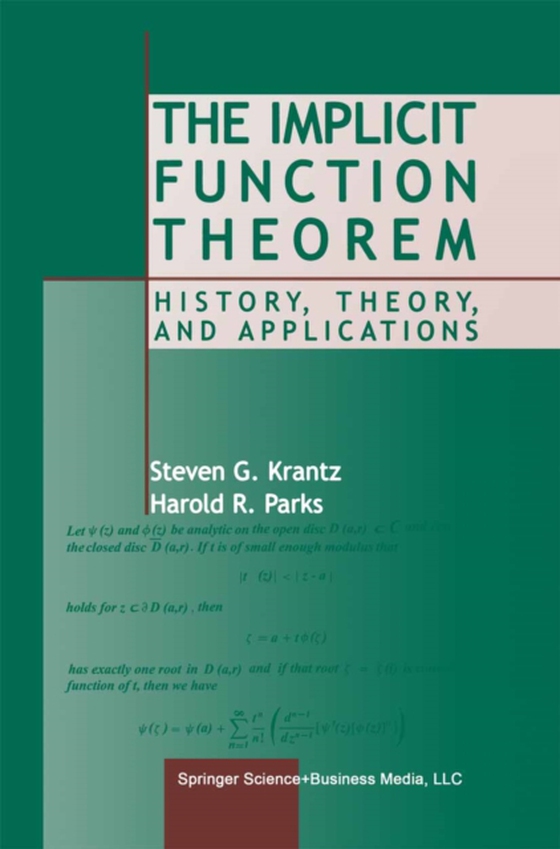
Implicit Function Theorem e-bog
546,47 DKK
(inkl. moms 683,09 DKK)
The implicit function theorem is part of the bedrock of mathematical analysis and geometry. Finding its genesis in eighteenth century studies of real analytic functions and mechanics, the implicit and inverse function theorems have now blossomed into powerful tools in the theories of partial differential equations, differential geometry, and geometric analysis. There are many different ...
E-bog
546,47 DKK
Forlag
Birkhauser
Udgivet
26 november 2012
Genrer
PBK
Sprog
English
Format
pdf
Beskyttelse
LCP
ISBN
9781461200598
The implicit function theorem is part of the bedrock of mathematical analysis and geometry. Finding its genesis in eighteenth century studies of real analytic functions and mechanics, the implicit and inverse function theorems have now blossomed into powerful tools in the theories of partial differential equations, differential geometry, and geometric analysis. There are many different forms of the implicit function theorem, including (i) the classical formulation for C^k functions, (ii) formulations in other function spaces, (iii) formulations for non-smooth functions, (iv) formulations for functions with degenerate Jacobian. Particularly powerful implicit function theorems, such as the Nash--Moser theorem, have been developed for specific applications (e.g., the imbedding of Riemannian manifolds). All of these topics, and many more, are treated in the present volume. The history of the implicit function theorem is a lively and complex story, and is intimately bound up with the development of fundamental ideas in analysis and geometry. This entire development, together with mathematical examples and proofs, is recounted for the first time here. It is an exciting tale, and it continues to evolve. "e;The Implicit Function Theorem"e; is an accessible and thorough treatment of implicit and inverse function theorems and their applications. It will be of interest to mathematicians, graduate/advanced undergraduate students, and to those who apply mathematics. The book unifies disparate ideas that have played an important role in modern mathematics. It serves to document and place in context a substantial body of mathematical ideas.
 Dansk
Dansk

